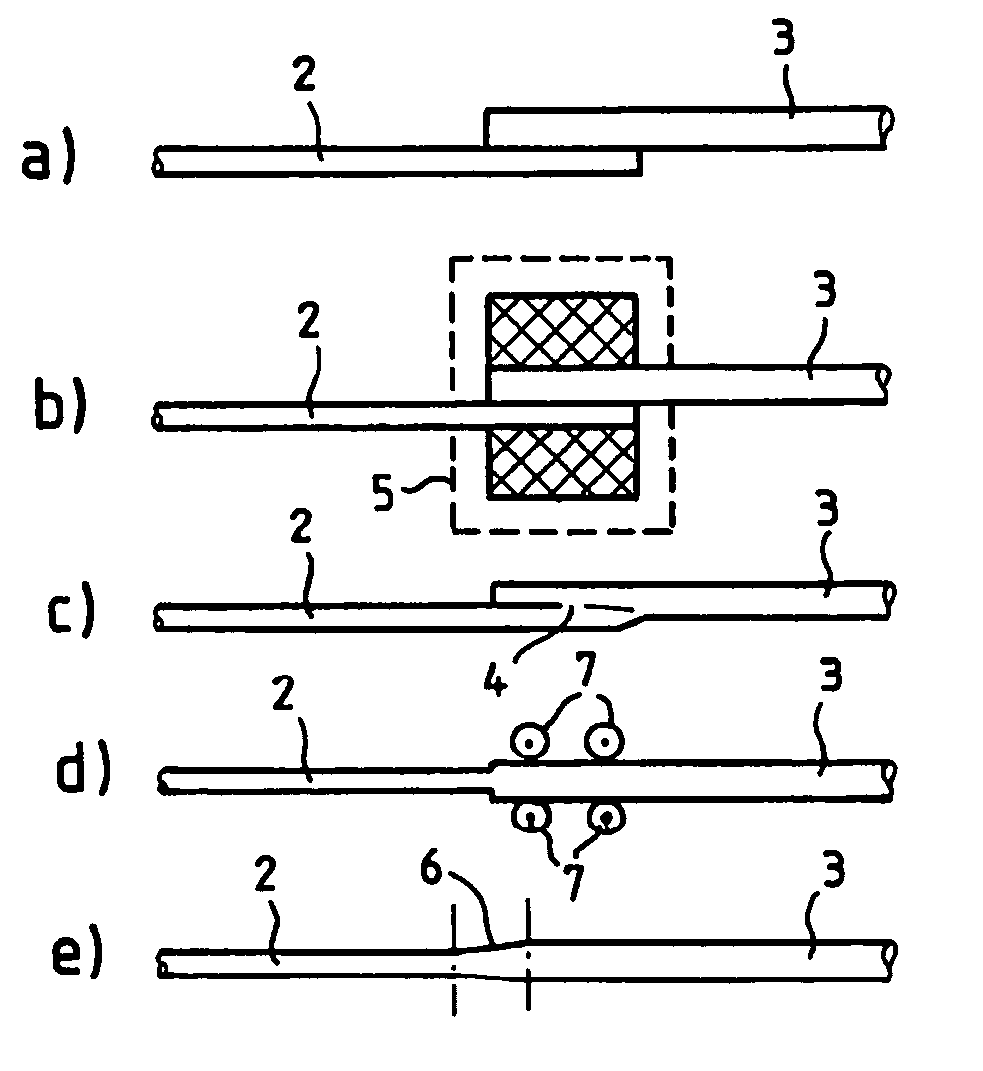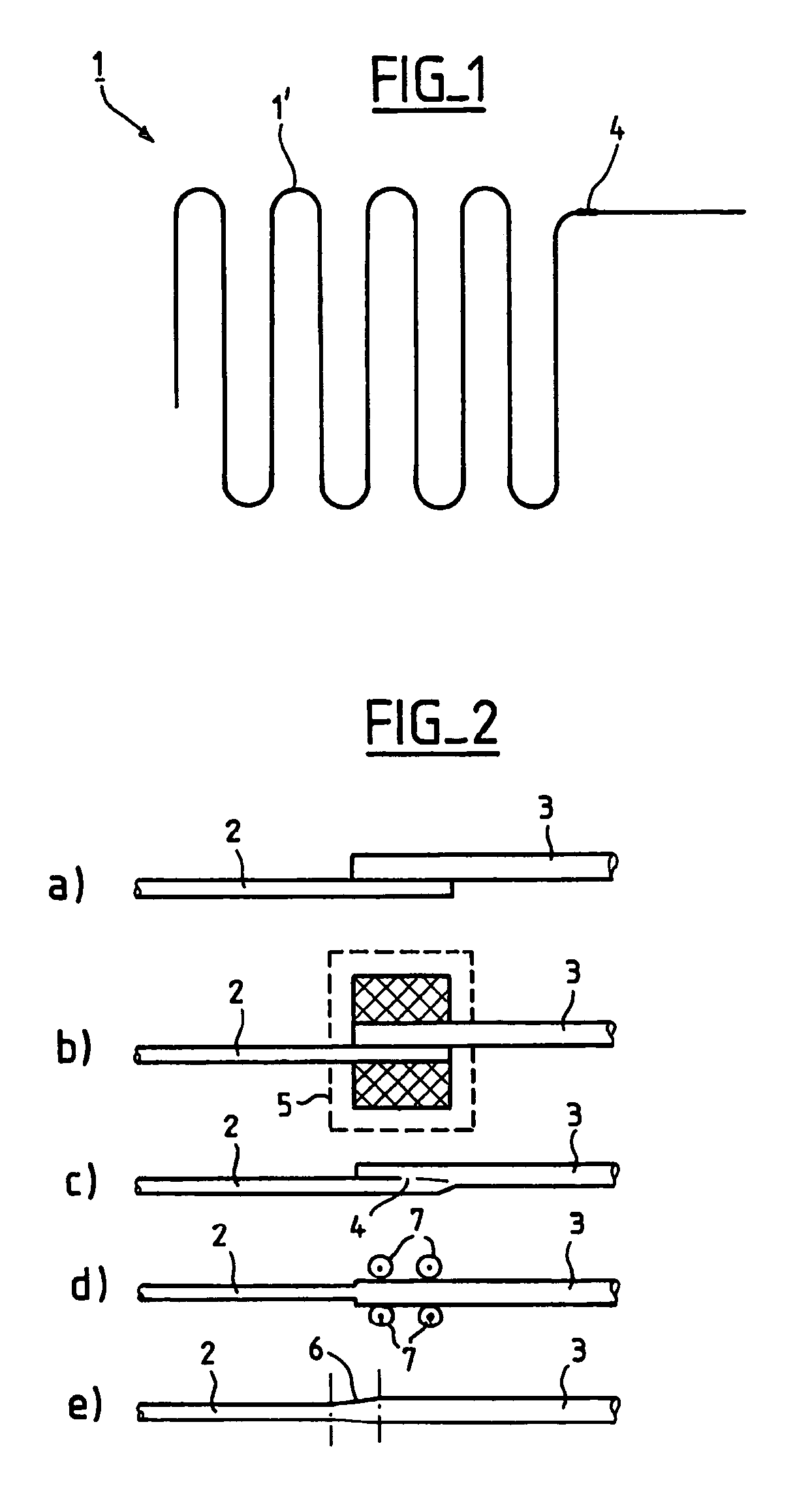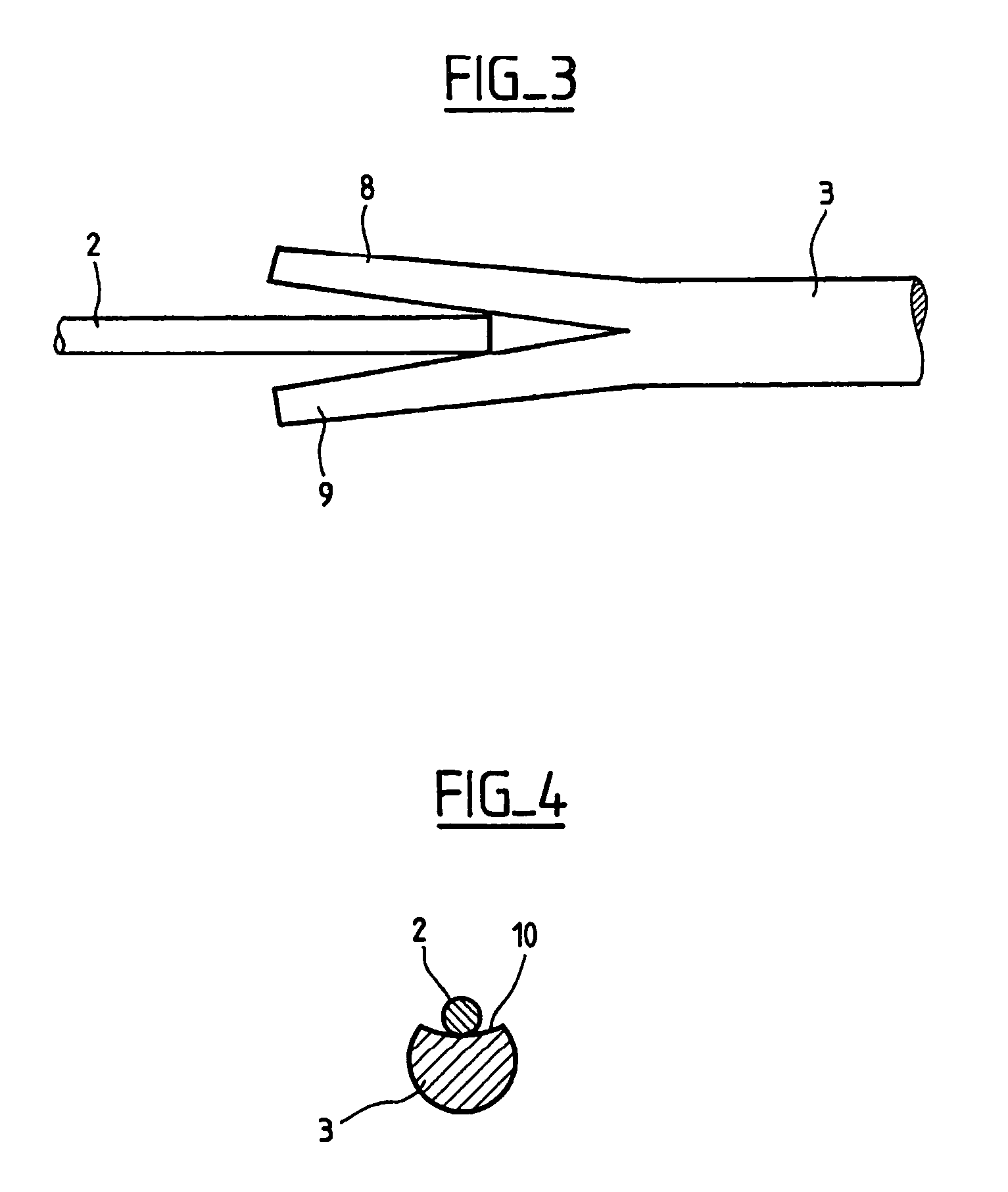Method for conductively connecting first and second electrical conductors
a technology of electrical conductors and conductive connections, which is applied in the direction of electrically conductive connections, contact member assembly/disassembly, contact member manufacturing, etc., can solve the problems of reduced electrical conductivity, high cost of splicing, and inability to connect the conductor to a copper conductor, and achieve good splicing
- Summary
- Abstract
- Description
- Claims
- Application Information
AI Technical Summary
Benefits of technology
Problems solved by technology
Method used
Image
Examples
second embodiment
[0044]The conductors are enclosed into a sheath 1′ of insulating material which can be applied by an extrusion line (not shown). Only by way of example, the resistance conductor has a smaller diameter than the copper conductor. A copper conductor can also be in some cases smaller than the largest resistance wire. Both conductors are connected to each other in the splicing area 4 using the method of the invention in her first or
first embodiment
[0045]In the method of the invention, the two conductors 2, 3 are brought into mechanical contact with each other in an overlapping position, according to FIG. 2a. In this position they are placed in an ultrasonic welding machine 5 and welded to each other, according to FIG. 2b. The ultrasonic welding takes place by vibration for instance at 20 kHz longitudinally, thus preferably using high vibratory energy with low amplitudes on the movement. The two conductors 2, 3 move against each other in a way that removes oxide layers and create an intermolecular bond.
[0046]Thus, the materials of the two conductors 2 and 3 are made weldable by ultrasonic energy and therefrom are bonded to each other without additional welding material in a connection with high mechanical tensile strength. The connected conductors 2 and 3 with their splicing area 4 are shown in FIG. 2c.
[0047]The splicing area 4 now is formed mechanically to achieve a smooth diameter transition 6 between the two conductors 2 a...
PUM
| Property | Measurement | Unit |
|---|---|---|
| Fraction | aaaaa | aaaaa |
| Diameter | aaaaa | aaaaa |
| Electrical resistance | aaaaa | aaaaa |
Abstract
Description
Claims
Application Information
 Login to View More
Login to View More - R&D
- Intellectual Property
- Life Sciences
- Materials
- Tech Scout
- Unparalleled Data Quality
- Higher Quality Content
- 60% Fewer Hallucinations
Browse by: Latest US Patents, China's latest patents, Technical Efficacy Thesaurus, Application Domain, Technology Topic, Popular Technical Reports.
© 2025 PatSnap. All rights reserved.Legal|Privacy policy|Modern Slavery Act Transparency Statement|Sitemap|About US| Contact US: help@patsnap.com



